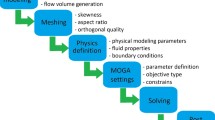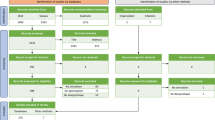Abstract
As an archipelagic country, passenger ships are used as the inter-island transportation mode. PT. PELNI is one of the shipping line companies operating some passenger vessels in Indonesia. As the total time of ship operated is getting high, the main engine will be slowly deteriorating. This paper took three ships with varied age of ship, namely KM Gunung Dempo, KM Labobar, and KM Dobonsolo, owned by PT. PELNI as the case studies for analyzing the age determination of ship diesel engine replacement using system dynamics (SD) approach. System dynamics has become one of the most frequently used approach to deal with a decision-making problem for a complex system. There are two major variables considered here, operational expenditures (OPEX) and capital expenditures (CAPEX). CAPEX consists of docking cost for engine replacement, purchasing the dual-fuel engine and liquefied natural gas (LNG) ISO tanks procurement, and cost that caused by the conversion of the cargo spaces into the LNG storage tanks. OPEX variable consists of all costs that related to the operations of the ship, such as fuel oil (FO) consumption, lubricating oil consumption, maintenance cost, and engine overhaul cost. These two variables, CAPEX and OPEX, represent the difference between conventional diesel engine and dual-fuel diesel engine. There were 18 scenarios applied to each ship with variations of LNG price, FO price, and the maintenance cost. The result shows that 14 scenarios are categorized under feasible scenario for KM Dobonsolo with the average profitable life of 2.22 years; 17 feasible scenarios for KM Labobar and 16 scenarios are feasible for KM Gunung Dempo with the average profitable life of 11.72 years and 15.17 years.





Similar content being viewed by others
References
Ashok B, Denis Ashok S, Ramesh Kumar C (2015) LPG diesel dual fuel engine – a critical review. Alexandria Eng J 54(2):105–126
Aslani A, Helo P, Naaranoja M (2014) Role of renewable energy policies in energy dependency in Finland: system dynamics approach. Appl Energy 113:758–765
Borshchev A and Filippov A, “From system dynamics and discrete event to practical agent based modeling: reasons, techniques, tools.”
Centre of Data and Information Technology of Energy and Mineral Resource (2013) Report of energy supply demand. In: Jakarta
Collins RD, de Neufville R, Claro J, Oliveira T, Pacheco AP (2013) Forest fire management to avoid unintended consequences: a case study of Portugal using system dynamics. J Environ Manag 130:1–9
de Salles DC, Gonçalves Neto AC, Marujo LG (2016) Using fuzzy logic to implement decision policies in system dynamics models. Expert Syst Appl 55:172–183
Directorate General of Oil and Gas (2015) Statistics oil and gas. In: Jakarta
Espinoza A, Bautista S, Narváez PC, Alfaro M, Camargo M (2017) Sustainability assessment to support governmental biodiesel policy in Colombia: a system dynamics model. J Clean Prod 141:1145–1163
Fan Y, Li Z, Pei J, Li H, Sun J (2015) Applying systems thinking approach to accident analysis in China: case study of ‘7.23’ Yong-Tai-Wen High-Speed train accident. Saf Sci 76:190–201
Figueredo GP and Aickelin U, “Comparing system dynamics and agent-based simulation for tumour growth and its interactions with effector cells”
Jakulin TJ (2016) System dynamics models as decision-making tools in agritourism. Agricultura 13(1–2):5–10
Jensen S, “Converting diesel engines to dual fuel the pros and cons of common gas engine types”
Lee BY, Mueller LE, Tilchin CG (2017) A systems approach to vaccine decision making. Vaccine 35:A36–A42
Liu X, Zeng M (2017) Renewable energy investment risk evaluation model based on system dynamics. Renew Sust Energ Rev 73:782–788
Lu Y, Zhang S-G, Hao L, Huangfu H-Y, Sheng H (2016) System dynamics modeling of the safety evolution of blended-wing-body subscale demonstrator flight testing. Saf Sci 89:219–230
Maruyama M (1992) A quickly understandable notation system for causal loops for strategic decision makers. Technol Forecast Soc Change 42(4):409–412
Ministry of Energy and Mineral Resources, “oil reserves,” 2016.
Othman MF, Adam A, Najafi G, Mamat R (2017) Green fuel as alternative fuel for diesel engine: a review. Renew Sust Energ Rev 80:694–709
PT PELNI (Persero), “Business Activities,” 2016.
Saavedra MR, M, Fontes CH d O, Freires FGM (2018) Sustainable and renewable energy supply chain: a system dynamics overview. Renew Sust Energ Rev 82:247–259
Sterman J and Rahmandad H, “Introduction to system dynamics | Sloan School of Management | MIT OpenCourseWare.” [Online]. Available: https://ocw.mit.edu/courses/sloan-school-of-management/15-871-introduction-to-system-dynamics-fall-2013/. [Accessed: 07-Aug-2018]
Sun Y, Liu N, Shang J, Zhang J (2017) Sustainable utilization of water resources in China: a system dynamics model. J Clean Prod 142:613–625
Sweetser A, “A comparison of system dynamics (SD) and discrete event simulation (DES)”
Tan W-J, Yang C-F, Château P-A, Lee M-T, Chang Y-C (2018) Integrated coastal-zone management for sustainable tourism using a decision support system based on system dynamics: a case study of Cijin, Kaohsiung, Taiwan. Ocean Coast Manag 153:131–139
Thaller C, Niemann F, Dahmen B, Clausen U, Leerkamp B (2017) Describing and explaining urban freight transport by system dynamics. Transp Res Procedia 25:1075–1094
Weaver CS, Turner SH (1994) Dual fuel natural gas/diesel engines: technology, performance, and emissions. SAE International
Williams D and Kennedy M, “Towards a model of decision-making for systems requirements engineering process management”
Author information
Authors and Affiliations
Corresponding author
Additional information
Publisher’s note
Springer Nature remains neutral with regard to jurisdictional claims in published maps and institutional affiliations.
Glossary
- Brake horsepower (BHP)
-
a measure of power of the engine without considering power losses due to the shaft, gearbox, etc. It is measured in the crankshaft by a brake dynamometer.
- Brake mean effective pressure (BMEP)
-
a parameter to measure the performance of a diesel engine and other internal combustion engine and measured from the dynamometer power (torque). It can also be viewed as the average pressure in the cylinder in one complete cycle.
- Compression ratio
-
ratio between the maximum and minimum volume in the cylinder of the engine.
- Deadweight tonnage (DWT)
-
a measure of how many weights the ship can carry (in tons). This is the sum of payload, fuel, lube oil, fresh water, provisions, and crews.
- Engine efficiency
-
ratio between the useful output of an engine, in this case is the engine power and the energy input from the fuel.
- ISO LNG tank
-
a specialized tank for LNG and has been standardized based on ISO standard.
- Maximum continuous rating (MCR)
-
the maximum output power that can be generated.
- RPM
-
revolutions per minute. The number of revolutions of the engine shaft can make in a minute.
- Ship payload
-
the cargo or passenger carried by the ship that can provide incomes to the company.
- Specific fuel gas consumption (SFGC)
-
the amount of energy required (produced by fuel gas) in kilojoule to produce 1 kW per hour.
- Specific fuel oil consumption (SFOC)
-
the fuel required (in gram) to produce 1 kW BHP per hour.
Rights and permissions
About this article
Cite this article
Prastyasari, F.I., Handani, D.W., Dinariyana, A. et al. Feasibility study of diesel engine replacement on passenger ships: a system dynamics approach. WMU J Marit Affairs 18, 281–296 (2019). https://doi.org/10.1007/s13437-019-00169-9
Received:
Accepted:
Published:
Issue Date:
DOI: https://doi.org/10.1007/s13437-019-00169-9




